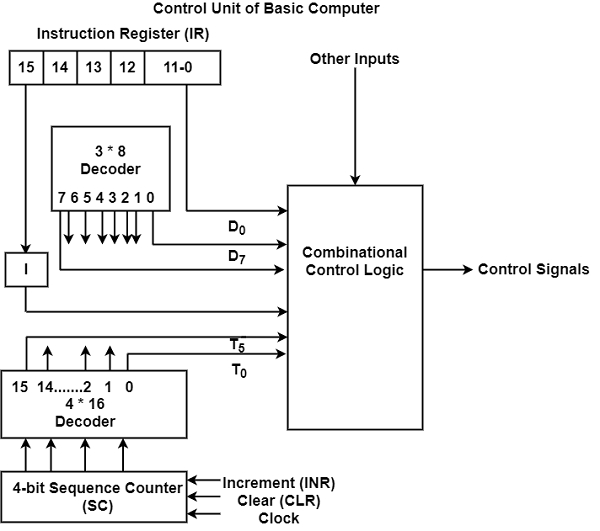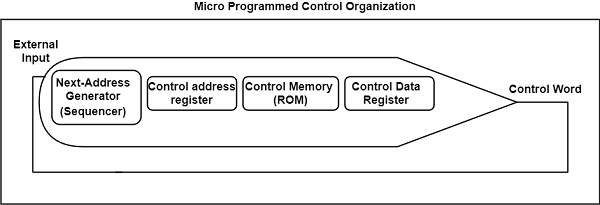
 Data Structure
Data Structure Networking
Networking RDBMS
RDBMS Operating System
Operating System Java
Java MS Excel
MS Excel iOS
iOS HTML
HTML CSS
CSS Android
Android Python
Python C Programming
C Programming C++
C++ C#
C# MongoDB
MongoDB MySQL
MySQL Javascript
Javascript PHP
PHP
- Selected Reading
- UPSC IAS Exams Notes
- Developer's Best Practices
- Questions and Answers
- Effective Resume Writing
- HR Interview Questions
- Computer Glossary
- Who is Who
What is Design of Control Unit in Computer Architecture?
A control unit drives the corresponding processing hardware by generating a set of signals that are in sync with the master clock. The two major operations performed by the control unit are instruction interpretation and instruction sequencing.
The main function of a control unit is to fetch the data from the main memory, determine the devices and the operations involved with it, and produce control signals to execute the operations.
Types of Control Unit
There are two types of control organization that are as follows −
Hardwired Control
In the hardwired organization, the control logic is executed with gates, flip-flops, decoders, and other digital circuits. It can be optimized to make a quick mode of operation. In the micro-programmed organization, the control data is saved in the control memory.
The control memory is programmed to start the needed sequence of micro-operations. A hardwired control requires changes in the wiring among the various elements if the design has to be modified or changed.
The block diagram of the control unit is displayed in the figure. It includes two decoders, a sequence counter, and several control logic gates.

Some instruction that is read from the memory is placed in the Instruction Register (IR). Therefore, the IR is divided into three elements such as I bit, opcode, and bits from 0 through 11. The opcodes are decoded with a 3 * 8 decoder whose outputs are indicated by symbols D0 through D7.
The binary value of the respective opcode is the subscripted number in the symbol. The symbol I which is the 15th bit of the instruction is transferred to a flip flop. The control logic gates have the bits that are used from 0 through 11.
The sequence counter is 4-bit counts in binary from 0 through 15. It can be incremented or cleared synchronously. The timing signals from T0 through T15 are the decoded outputs of the decoder.
Microprogrammed Control
The microprogrammed control stores its control data in the control memory. It can start the important set of micro-operations, the control memory is programmed. The changes and modifications in a micro-programmed control can be completed by upgrading the microprogram in the control memory.
The figure displays the general configuration of a microprogrammed control organization.

The control is pretended to be a Read-Only Memory (ROM), where all the control data is saved permanently. ROM supports the address of the microinstruction. The other register is the control data register that stores the microinstruction that is read from the memory. It includes a control word that holds one or more microoperations for the data processor.
The next address should be evaluated during this operation is done. It is evaluated in the next address generator. Therefore, it is transferred to the control address register to be read. The next address generator is referred to as the microprogram sequencer. It depends on the inputs to a sequencer, it decides the address of the next microinstruction. The microinstructions can be determined in different approaches.

